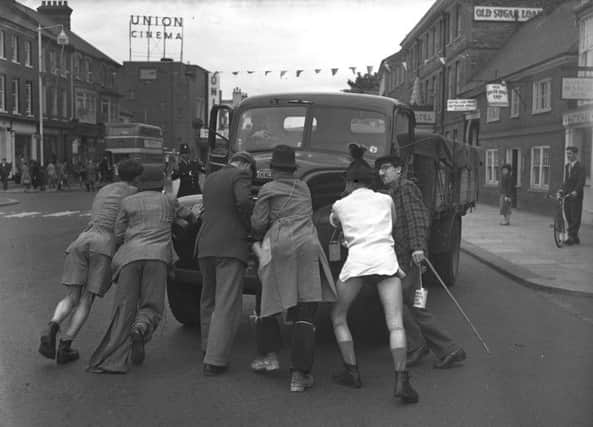Hard pushed to solve Dunstable mystery of lost trousers


The man on the right is carrying a cash tin which helpfully gives the name of the charity.
The picture was taken in around 1955 and our first thought was that it was part of Dunstable’s annual carnival procession.
Advertisement
Hide AdAdvertisement
Hide AdBut there are no crowds lining the street and the policeman seems to be taking a serious view of the situation. Perhaps the man with no trousers could contact the Gazette to explain.
In the background you can see the Union Cinema, whose giant sign once dominated the town. Today, the splendidly refurbished building is the home of Dunstable Community Church.
On the extreme right is the Sugar Loaf Tap, once a bar attached to the Sugar Loaf Hotel and now the home of the Ruby Tuesday fashion shop (named after a Rolling Stones song).
In stagecoach times the Sugar Loaf, boasting a nationally admired stable of matching grey horses, prided itself on providing top class accommodation for the nobility but in the 1800s it was apparently one of a number of inns obliged to find rooms, free of charge, for military use. At one time as many as 100 soldiers were billeted in the town. The Sugar Loaf proprietors tried to cope by erecting the extension alongside the main hotel which was originally called The Soldier’s House.
Advertisement
Hide AdAdvertisement
Hide AdA contemporary source for this is the old history book, the Dunstaplogia by Charles Lamborn, published in 1859. Lamborn gives a first-hand account of town events of the time, but says that The Soldier’s House was built during “the American war”. That’s puzzling (the American civil war, for instance, did not begin until 1861) and Dunstable historian Vivienne Evans has discovered documents showing that the Sugar Loaf’s landlord, John Johnson, first paid rent for his new building in June 1851. So why were all those soldiers in town?
> Yesteryear is compiled by John Buckledee, chairman of Dunstable and District Local History Society.